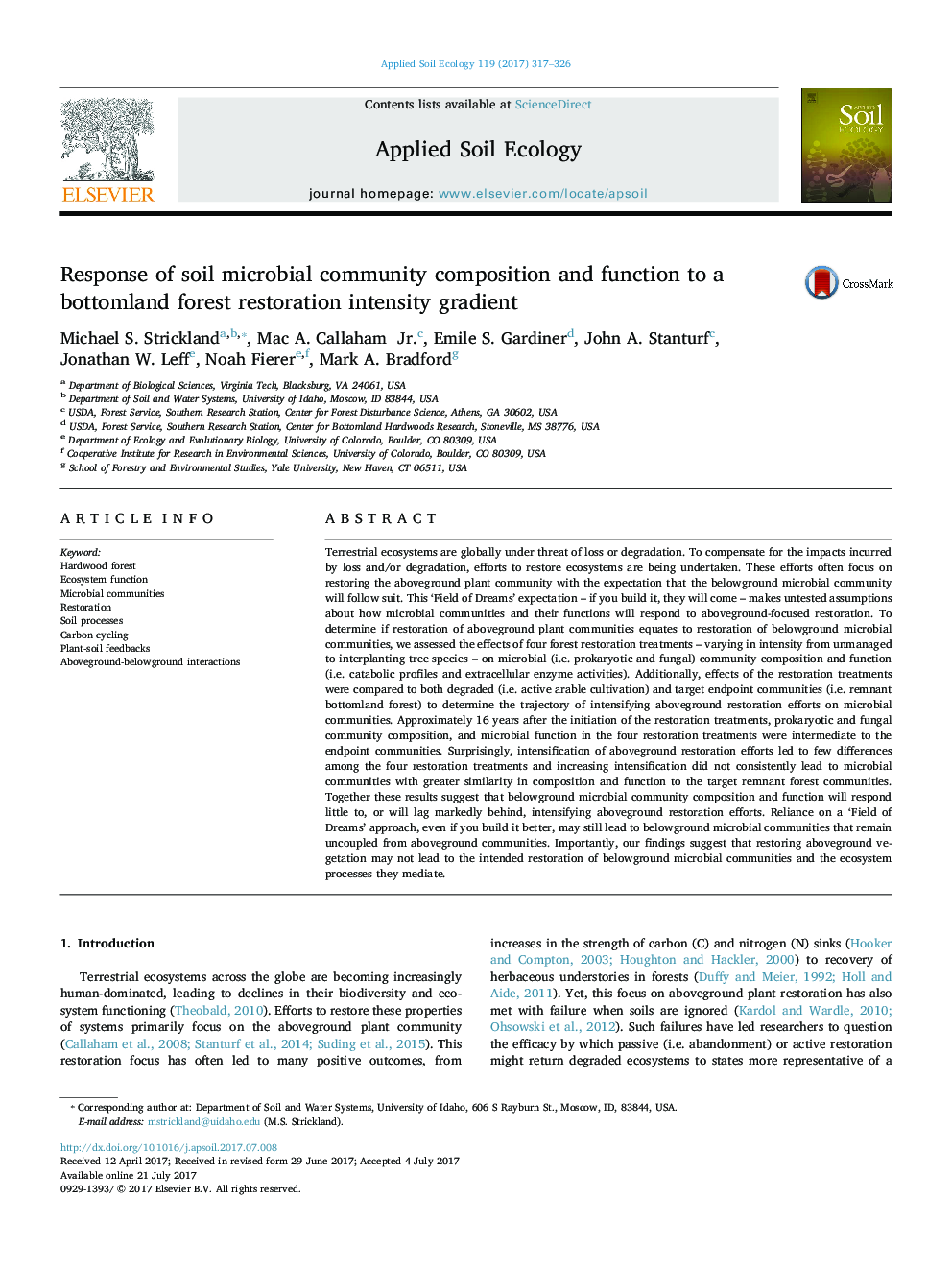| کد مقاله | کد نشریه | سال انتشار | مقاله انگلیسی | نسخه تمام متن |
|---|---|---|---|---|
| 5742638 | 1617765 | 2017 | 10 صفحه PDF | دانلود رایگان |
- We examined the effect of intensifying aboveground restoration on soil microbes.
- Restoration had little influence on soil microbial community composition.
- Restoration had little influence on soil microbial community function.
- Results suggest aboveground restoration does not restore soil microbial communities.
Terrestrial ecosystems are globally under threat of loss or degradation. To compensate for the impacts incurred by loss and/or degradation, efforts to restore ecosystems are being undertaken. These efforts often focus on restoring the aboveground plant community with the expectation that the belowground microbial community will follow suit. This 'Field of Dreams' expectation - if you build it, they will come - makes untested assumptions about how microbial communities and their functions will respond to aboveground-focused restoration. To determine if restoration of aboveground plant communities equates to restoration of belowground microbial communities, we assessed the effects of four forest restoration treatments - varying in intensity from unmanaged to interplanting tree species - on microbial (i.e. prokaryotic and fungal) community composition and function (i.e. catabolic profiles and extracellular enzyme activities). Additionally, effects of the restoration treatments were compared to both degraded (i.e. active arable cultivation) and target endpoint communities (i.e. remnant bottomland forest) to determine the trajectory of intensifying aboveground restoration efforts on microbial communities. Approximately 16 years after the initiation of the restoration treatments, prokaryotic and fungal community composition, and microbial function in the four restoration treatments were intermediate to the endpoint communities. Surprisingly, intensification of aboveground restoration efforts led to few differences among the four restoration treatments and increasing intensification did not consistently lead to microbial communities with greater similarity in composition and function to the target remnant forest communities. Together these results suggest that belowground microbial community composition and function will respond little to, or will lag markedly behind, intensifying aboveground restoration efforts. Reliance on a 'Field of Dreams' approach, even if you build it better, may still lead to belowground microbial communities that remain uncoupled from aboveground communities. Importantly, our findings suggest that restoring aboveground vegetation may not lead to the intended restoration of belowground microbial communities and the ecosystem processes they mediate.
Journal: Applied Soil Ecology - Volume 119, October 2017, Pages 317-326
